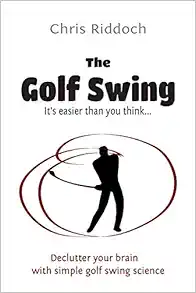
Description
'This book is a must for all golfers ... it is easy to understand and will definitely take you deeper into the rabbit hole and closer to Wonderland. It is the perfect stocking stuffer... SHAWN CLEMENT, PGA coach (Canada), November 2012 There are many golf instruction books that do an excellent job of describing the 'perfect golf swing'. And that's the problem! They only describe... What's missing is anything about how the human body actually learns such a complex skill. Simply knowing what a good swing looks like is only half the battle - we also need to know how to learn it. This book fills the gap. First, it explains the key mechanics of a powerful and accurate golf swing that all golfers should know. And then it goes further - it explains the best way to teach our bodies to perform those mechanics. It's a unique combination of two sports sciences - golf swing biomechanics and human skill learning. The book isn't a new 'swing theory' - it's an up-to-date scientific analysis of more than 200 high-quality research papers on the golf swing. It's the scientific facts without the confusing fiction. And the result isn't the usual 'swing-of-a-thousand-positions' - it's a simpler and more effective way to develop a good golf swing. Golfers of all levels will benefit from this modern, scientific approach. The Golf Swing uses the power of modern science to reveal the best way to swing a golf club. It explains why we currently find the task so difficult and how our brains have become cluttered with an excess of golf swing theory. Author Chris Riddoch, a scratch golfer in his teens and now one of the UK's top sports scientists, explains how adopting a simpler approach is more effective, making maximum use of our powerful, innate skill-learning mechanisms. He also reveals how approaching the golf swing as a long series of 'perfect positions' is the greatest barrier to learning. The Golf Swing is a scientific analysis based on more than 200 research articles, addressing both golf swing mechanics and effective learning and teaching strategies. The analysis identifies five key skills - four physical and one mental - that are essential to making an effective golf swing. Each skill is explained, together with simple strategies for learning them.Grounded firmly in high-quality science, yet written in a light-hearted, entertaining style, The Golf Swing cuts through the buzzing bewilderment that surrounds the natural human skill of hitting a ball with a high-tech stick. All golfers - from beginners to tournament professionals - will find ways to improve the effectiveness of their golf swings. Chris Riddoch was born in Chester, UK, in 1949. At age 12, he received his first golf handicap - 12. By age 17, he'd reduced it to scratch. He represented his college (Borough Road) and his county (Cheshire), captaining the junior team at age 17. He had trials for England and was selected as reserve - unfortunately, no-one was sick on the day. His current handicap is six.On leaving school, Chris dabbled with professional golf, but decided instead on an academic career. He obtained degrees in physical education and sports science, including a PhD in sports performance. Chris has been a teacher and research professor at four UK universities: Bath, Bristol, Middlesex, and Queen's (Belfast). He's one of the UK's top sports scientists, with more than 200 research articles on sport and exercise science to his name.He's married to Maya and they live in Stockholm. Read more
Features & Highlights
- '
- An effective golf swing will produce a thousand correct positions - but a thousand correct positions won’t produce an effective golf swing'.
- Using a thorough analysis of more than 200 research articles, author Chris Riddoch - a scratch golfer in his teens and one of the UK’s leading sports scientists – explains why this statement is true. In
- The Golf Swing
- , he describes why we must avoid the endless technical complexities of the ‘swing theory quagmire’. He explains how dissecting the swing into countless angles and positions and trying to recombine them actually stifles our best learning weapon – our powerful, innate skill-learning mechanisms, which thrive on
- simplicity.
- The Golf Swing
- combines two sciences: golf swing mechanics and human skill learning. The result is an approach to swing development based on just four movement skills -
- key skills
- - each of which can be learnt using the simplest of swing thoughts. In contrast to other books - which merely describe the swing -
- The Golf Swing
- explains the best way to learn it.
- Grounded firmly in high-quality science, yet written in a non-scientific, entertaining style,
- The Golf Swing
- cuts through the buzzing bewilderment that surrounds the golf swing. All golfers - from beginners to tournament professionals - will benefit.
- 'For any other human skill, we know we can do it, but we don’t know how we do it. In the golf swing, it's the opposite - we know everything about how to do it, but we can’t DO it'.





